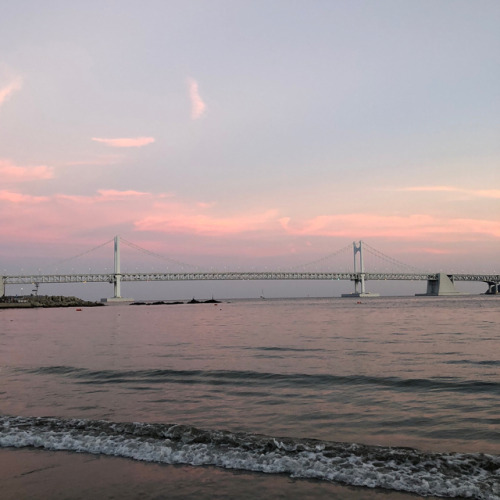Name The Artemis Moonikin!
Name the Artemis Moonikin!
Choose your player!
As we gear up for our Artemis I mission to the Moon — the mission that will prepare us to send the first woman and the first person of color to the lunar surface — we have an important task for you (yes, you!). Artemis I will be the first integrated test flight of the Space Launch System (SLS) rocket and the Orion crew capsule. Although there won’t be any humans aboard Orion, there will be a very important crewmember: the Moonikin!
The Moonikin is a manikin, or anatomical human model, that will be used to gather data on the vibrations that human crewmembers will experience during future Artemis missions. But the Moonikin is currently missing something incredibly important — a name!
There are eight names in the running, and each one reflects an important piece of NASA’s past or a reference to the Artemis program:
1. ACE
ACE stands for Artemis Crew Explorer. This is a very practical name, as the Moonikin will be a member of the first official “crew” aboard Artemis I.
The Moonikin will occupy the commander’s seat inside Orion, be equipped with two radiation sensors, and wear a first-generation Orion Crew Survival System suit—a spacesuit astronauts will wear during launch, entry, and other dynamic phases of their missions. The Moonikin will also be accompanied by phantoms, which are manikins without arms or legs: Zohar from the Israel Space Agency and Helga from the German Aerospace Center. Zohar and Helga will be participating in an investigation called the Matroshka AstroRad Radiation Experiment, which will provide valuable data on radiation levels experienced during missions to the Moon.

2. Campos
Campos is a reference to Arturo Campos, an electrical engineer at NASA who was instrumental to bringing the Apollo 13 crew safely back home.
Apollo 13 was on its way to attempt the third Moon landing when an oxygen tank exploded and forced the mission to abort. With hundreds of thousands of miles left in the journey, mission control teams at Johnson Space Center were forced to quickly develop procedures to bring the astronauts back home while simultaneously conserving power, water, and heat. Apollo 13 is considered a “successful failure,” because of the experience gained in rescuing the crew. In addition to being a key player in these efforts, Campos also established and served as the first president of the League of United Latin American Citizens Council 660, which was composed of Mexican-American engineers at NASA.

3. Delos
On June 26, 2017, our Terra satellite captured this image of the thousands of islands scattered across the Aegean Sea. One notable group, the Cyclades, sits in the central region of the Aegean. They encircle the tiny, sacred island of Delos.
According to Greek mythology, Delos was the island where the twin gods Apollo and Artemis were born.
The name is a recognition of the lessons learned during the Apollo program. Dr. Abe Silverstein, former director of NASA’s Glenn Research Center, said that he chose the name “Apollo” for the NASA's first Moon landing program because image of "Apollo riding his chariot across the Sun was appropriate to the grand scale of the proposed program." Between 1969 and 1972, we successfully landed 12 humans on the lunar surface — providing us with invaluable information as the Artemis program gears up to send the first woman and the first person of color to the Moon.

4. Duhart
Duhart is a reference to Dr. Irene Duhart Long, the first African American woman to serve in the Senior Executive Service at Kennedy Space Center. As chief medical officer at the Florida spaceport, she was the first woman and the first person of color to hold that position. Her NASA career spanned 31 years.
Working in a male-dominated field, Long confronted — and overcame — many obstacles and challenges during her decorated career. She helped create the Spaceflight and Life Sciences Training Program at Kennedy, in partnership with Florida Agricultural and Mechanical University, a program that encouraged more women and people of color to explore careers in science.

5. Montgomery
Montgomery is a reference to Julius Montgomery, the first African American ever hired at the Cape Canaveral Air Force Station to work as a technical professional. After earning a bachelor's degree at Tuskegee Institute in Alabama, Montgomery served in the U.S. Air Force, where he earned a first class radio-telescope operator's license. Montgomery began his Cape Canaveral career in 1956 as a member of the “Range Rats,” technicians who repaired malfunctioning ballistic missiles.
Montgomery was also the first African American to desegregate and graduate from Brevard Engineering College, now the Florida Institute of Technology in Melbourne, Florida.

6. Rigel
Rigel is one of the 10 brightest stars in Earth's sky and forms part of the familiar constellation Orion. The blue supergiant is about 860 light-years from Earth.
The reference to Rigel is a nod toward the Orion spacecraft, which the Moonikin (and future Artemis astronauts!) will be riding aboard. Built to take humans farther than they’ve ever gone before, the Orion spacecraft will serve as the exploration vehicle that will carry crew into space and provide safe re-entry back to Earth.

7. Shackleton
Shackleton Crater is a crater on the Moon named after the Antarctic explorer, Ernest Shackleton. The interior of the crater receives almost no direct sunlight, which makes it very cold — the perfect place to find ice. Our Lunar Reconnaissance Orbiter spacecraft (LRO) returned data that ice may make up as much as 22% of the surface material in Shackleton!
Shackleton Crater is unique because even though most of it is permanently shadowed, three points on the rim remain collectively sunlit for more than 90% of the year. The crater is a prominent feature at the Moon’s South Pole, a region where NASA plans to send Artemis astronauts on future missions.

8. Wargo
Wargo is a reference to Michael Wargo, who represented NASA as the first Chief Exploration Scientist for the Human Exploration and Operations Mission Directorate at NASA Headquarters. He was a leading contributor to the Lunar Reconnaissance Orbiter and the Lunar Crater Observation and Sensing Satellite (LCROSS), which launched together on to the Moon and confirmed water existed there in 2009.
Throughout his time as an instructor at MIT and his 20-year career at NASA, Wargo was known as a science ambassador to the public, and for his ability to explain complex scientific challenges and discoveries to less technical audiences. Following his sudden death in 2013, the International Astronomical Union posthumously named a crater on the far side of the Moon in his honor.

Want to participate in the naming contest? Make sure you are following @NASAArtemis on Twitter, Facebook, and Instagram to get notified about the bracket challenges between June 16 and June 28! Learn more about the Name the Artemis Moonikin Challenge here.
Make sure to follow us on Tumblr for your regular dose of space: http://nasa.tumblr.com.
More Posts from Thehkr and Others
10 Ways the 2010s Pushed Communication and Navigation into the Future!
We transmit vast amounts of data from space, letting all of our satellites “phone home.” Imagery from far off regions of our solar system, beautiful visions of other galaxies and insights into planet Earth flow through our communications networks.
Our Space Communications and Navigation (SCaN) program is dedicated to making sure we precisely track, command and control our spacecraft. All the while, they develop bold new technologies and capabilities for Artemis – our sustainable lunar exploration program that will place the first woman and the next man on the Moon in 2024.
As we prepare to say goodbye to the 2010s, let’s take a look at 10 of the biggest milestones in space communications and navigation of the past decade.
1. Continuous global communications? TDRS has you covered.

From 2013 to 2017, we launched three Tracking and Data Relay Satellites, or TDRS for short. These new satellites replenished a fleet that has been around since the early 1980s, allowing us to provide continuous global communications coverage into the next decade. Missions like the International Space Station depend on TDRS for 24/7 coverage, allowing our astronauts to call home day or night.
2. Binge watching on the Moon? Laser communications will make it possible.

Imagine living at the Moon. With the Artemis program, we’re making it happen! However, we can’t live there without decent internet, right? In 2013, we conducted the Lunar Laser Communication Demonstration (LLCD). This was the first high-speed laser communications demonstration from the Moon, transmitting data at a whopping 622 megabits per second, which is comparable to many high-speed fiber-optic connections enjoyed at home on Earth! Our LLCD sent back high-definition video with no buffering.
3. Record Breaking GPS navigation, at your service.
Space communications is just one piece of the SCaN puzzle. We do navigation too! We even break records for it. In 2016, our Magnetospheric Multiscale (MMS) mission broke the world record for highest altitude GPS fix at 43,500 miles above Earth. In 2017, they broke it again at 93,200 miles. Earlier this year, they broke it a third time at 116,200 miles from Earth — about halfway to the Moon!
Thanks to MMS, our navigation engineers believe that GPS and similar navigation constellations could play a significant role in the navigation architecture of our planned Gateway spaceship in lunar orbit!
4. Crashing planes as part of the game – of research!

Then there was that one summer we crashed three planes in the name of research! In 2015, our Search and Rescue office tested crash scenarios at Langley Research Center’s Landing and Impact Research Facility to improve the reliability of emergency beacons installed in planes. After the study, we made recommendations on how pilots should install these life-saving beacons, increasing their chances of survival in the event of a crash. The Federal Aviation Administration adopted these recommendations this year!
5. The Deep Space Atomic Clock takes flight.

Missions venturing into deep space want the autonomy to make decisions without waiting for a commands from Earth. That’s why we launched the Deep Space Atomic Clock this past year. This itty-bitty technology demonstration is a small, ultra-stable timekeeping device that could enable autonomous navigation!
6. 50 never looked so good – for our Deep Space Network.

In 2013, our Deep Space Network celebrated its 50th birthday! This is the network that transmitted Neil Armstrong’s famous words, “That’s one small step for (a) man, one giant leap for mankind.” Some of its more recent accomplishments? Gathering the last bits of data before Cassini dove into Saturn’s upper atmosphere, pulling down the “heart” of Pluto and talking to the Voyager probes as they journeyed into interstellar space!
7. SCaN Testbed becomes an official Hall of Famer.

In 2012, we installed the SCaN Testbed, which looks like a blue box in the above picture, on the space station! We built the testbed out of Software Defined Radios, which can change their functionality and employ artificial intelligence. These radios will help us adapt to the increasingly crowded communications landscape and improve the efficiency of radio technology. The Testbed was so ground-breaking that it was inducted into the Space Technology Hall of Fame in 2019.
8. Moon mission communications system, secured!

Just a few weeks ago, we held a ribbon-cutting for the Near Earth Network’s Launch Communications Segment, which will support Artemis missions as they rocket toward the Moon! During initial, dynamic phases of launch, the segment’s three stations will provide communications between astronauts and mission controllers, giving them the data necessary to ensure crew safety.
9. Deep Space Station antenna introduces “beam waveguide” technology.

On October 1, 2014, in Canberra, Australia, the Deep Space Network’s Deep Space Station 35 (DSS-35) antenna went operational. It was the first of a number of new antennas built to support the growing number of deep space missions! The antenna is different from other antennas that were built before it. Older antennas had a lot of their equipment stored high up on the antenna above the dish. DSS-35 uses “beam waveguide” technology that stores that equipment underground. This makes the weight sitting on the dish much lighter, cuts down on interference and makes the antenna much easier to operate and maintain.
10. Hello, Alaska!

Last — but certainly not least — we expanded our presence in the 49th state, Alaska! While this picture might look like antennas rising from the forests of Endor, the one in the foreground is actually an antenna we installed in 2014 in partnership with the University of Alaska Fairbanks. Because of its proximity to the polar north, this 11-meter beauty is uniquely situated to pull down valuable Earth science data from our polar-orbiting spacecraft, contributing to scientists’ understanding of our changing planet!
Make sure to follow us on Tumblr for your regular dose of space: http://nasa.tumblr.com.


It’s sad when one has to paint a dark picture of another in order to paint a “perfect” picture of themselves.
Unknown (via quotemadness)

石川恋





久松郁実

https://www.instagram.com/jiyeoomi/p/BmyXt49hYl0/

It should be emphasized that the safety of police officers is recognized as a fundamental concern. No responsible citizen expects a police officer to risk his or her life unnecessarily or foolishly.
How was it possible for the world to be so beautiful and so cruel at the same time?
Gillian Rubinstein (via quotemadness)

-
 the-most-medium-lesbian reblogged this · 7 months ago
the-most-medium-lesbian reblogged this · 7 months ago -
 discopunkt reblogged this · 10 months ago
discopunkt reblogged this · 10 months ago -
 sea-cove liked this · 1 year ago
sea-cove liked this · 1 year ago -
 faeriequeen67 reblogged this · 2 years ago
faeriequeen67 reblogged this · 2 years ago -
 faeriequeen67 liked this · 2 years ago
faeriequeen67 liked this · 2 years ago -
 mymusicbias liked this · 2 years ago
mymusicbias liked this · 2 years ago -
 nunyo-bizznez liked this · 2 years ago
nunyo-bizznez liked this · 2 years ago -
 9625tboz84 liked this · 2 years ago
9625tboz84 liked this · 2 years ago -
 oj1c7owbmk liked this · 2 years ago
oj1c7owbmk liked this · 2 years ago -
 ew36q548to liked this · 2 years ago
ew36q548to liked this · 2 years ago -
 50rnnt7b6z liked this · 2 years ago
50rnnt7b6z liked this · 2 years ago -
 r0q3hcnyw0 liked this · 2 years ago
r0q3hcnyw0 liked this · 2 years ago -
 rhrylff4ty liked this · 2 years ago
rhrylff4ty liked this · 2 years ago -
 duckinatree reblogged this · 2 years ago
duckinatree reblogged this · 2 years ago -
 duckinatree liked this · 2 years ago
duckinatree liked this · 2 years ago -
 renata-dx liked this · 3 years ago
renata-dx liked this · 3 years ago